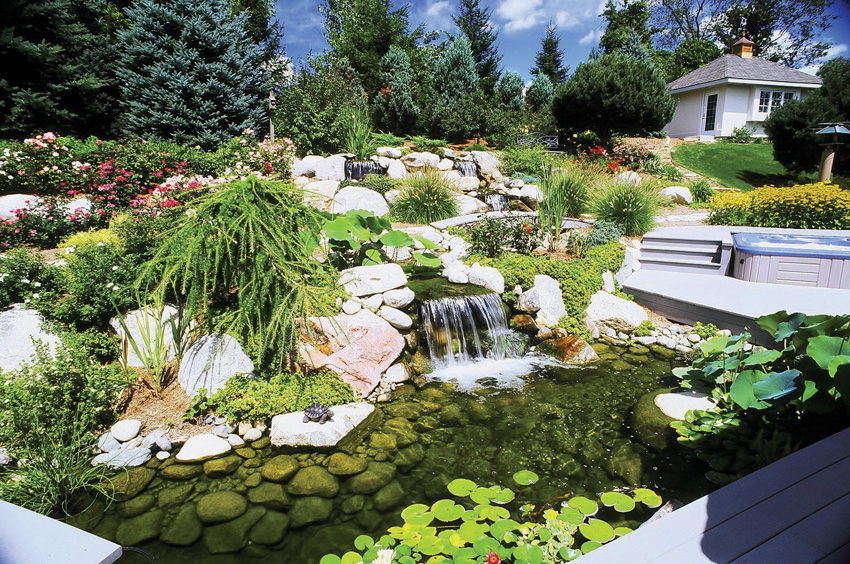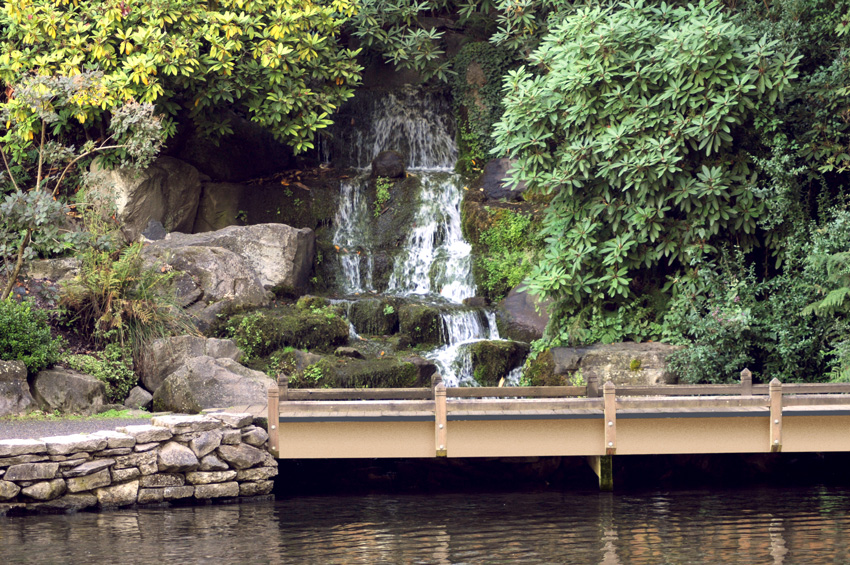Designing for Landscape Architecture
Designing for Water in the Landscape
Designing water features, both functional and decorative, has been a component of landscape design since the earliest civilizations. Early Asian and Roman settlements provide examples of decorative and functional water features that enhanced both the aesthetics and the ecology of developments. The SITES v2 Rating System provides a number of criteria that address water conservation as a critical consideration in landscape architectural and site planning projects.
In the SITES v2 Rating System, Section 1: Site Context provides criteria for protection of flood plain functions (P 1.2) and conservation of aquatic ecosystems (P 1.3). Section 3: Site Design – Water, has six criteria addressing water management. These criteria include:
- Water P3.1: Manage precipitation on-site
- Water P3.2: Reduce water use for irrigation
- Water C3.3: Manage precipitation beyond baseline
- Water C3.4: Reduce outdoor water use
- Water C3.5: Design functional stormwater features as amenities
- Water C3.6: Restore aquatic ecosystems
Outdoor water features can provide a means for managing precipitation, providing functional stormwater features, providing areas for the restoration of aquatic ecosystems, and providing storage for rainwater collection that can be used for on-site irrigation. Construction of outdoor water features requires an impervious layer to hold the water. This impervious layer can be a rubber liner or an EPDM geomembrane.
By definition, EPDM rubber (ethylene propylene diene monomer [M-class] rubber) is a type of synthetic rubber that is also an elastomer characterized by a wide range of applications. The M refers to its classification in ASTM standard D-1418; the M class includes rubbers having a saturated chain of the polymethylene type.
Geomembranes can be used for a variety of conditions and to address a number of different design challenges. They have been used in the following applications.
- Agricultural pits and ponds
- Aquaculture applications
- Canals
- Constructed wetlands
- Decorative water features
- Evaporation ponds
- Exposed covers and caps
- Landscaping features
- Mining applications
- Retention ponds
- Water reservoirs
When designing the landscape of a home, landscape architects, architects, and engineers may consider a pond or water feature to increase the aesthetic appeal and value of the property, and enhance the ecology of the site through the creation of ponds for mitigating stormwater runoff and for the collection of rainwater.
Rubber liners or EPDM geomembranes are the ideal tool for creating a unique water feature in a landscape design, such as a decorative pond, a fountain, a koi pond, a small stream, or a waterfall. Rubber liners are available in a variety of sizes and lengths, contributing to design flexibility and allowing the liner to fit snugly over the ground under any water feature without cracking or tearing. EPDM geomembranes are available in various panel sizes so that designers can choose a minimal number of panels to reduce the amount of field seaming required.

Photo courtesy of Firestone Building Products
Pond liners can be used to create water features at residential and commercial sites.
EPDM geomembranes are a durable, dependable solution for many water gardening projects in both residential and commercial applications, but especially for larger projects that require water containment applications, such as agriculture, aquaculture, and mining. EPDM is specifically formulated to be safe for fish and aquatic life.
The specially compounded material in the EPDM geomembrane prevents cracking, thus making it durable against UV and ozone exposure as well as extreme temperatures.
Notice

www.firestonebpco.com/lining

www.soilretention.com/drivable-grass

tournesolsiteworks.com











